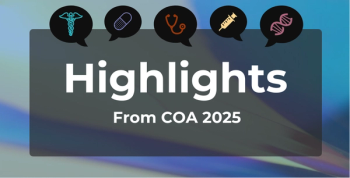
Cost Barriers Continue to Limit Access to Fertility Care
Key Takeaways
- Cost is the primary barrier to accessing fertility care, with significant disparities based on income, age, and race.
- Legal challenges, including Roe v Wade's overturning and Alabama's IVF rulings, complicate fertility treatment access.
Of the 10% of women contacted for this survey who said that they or their partner had ever sought fertility assistance, only 7% were able to get the necessary care; cost was cited as the top reason for not being able to access fertility services.
Of the 13% percent of reproductive age women who reported needing fertility assistance in the 2024 KFF Women’s Health Survey, just 10% went on to receive assistance to become pregnant or help preventing a miscarriage. Of that 10%, 3% were not successful, and this could have a lasting impact on their plans to potentially have a family or grow their families if they continue to come up against these roadblocks. Among the reasons given—costs, coverage, provider availability, time constraints—the top reason is cost, the report noted.1
The survey overall covered women aged 18 to 64 years (N = 6246); this fertility care and outcomes analysis was narrower, focusing on women aged 18 to 49 years (n = 3901).1
The women who reported ever needing fertility services was highest among those aged 36 to 49 years (18%) compared with women aged 26 to 35 years (13%) or 18 to 25 years (4%). Fewer Black women vs White women reported needing fertility care (9% vs 14%), and totals were close to equal among lesbian/gay women (12%), bisexual women (12%), and non–lesbian gay, or bisexual women (14%).
Barriers in access to fertility treatment have been an especially hot topic in the news lately, for 2 principal reasons that center on recent court decisions: the overturning of
In the KFF survey, IVF and artificial, or intrauterine, insemination (IUI) were cited by 14% of the women each as the primary method through which they received fertility care and assistance, but the overall total of women who reported receiving either service was a meager 2%. Across the entire survey, cost was the top roadblock women of reproductive age encountered that prevented them from receiving needed fertility care. There are several reasons cited for this1:
- A single course of IVF treatment runs between $9000 and $14,000
- More than 1 round of IVF is the norm before resulting in pregnancy
- Private insurance has severe restrictions on covering fertility assistance
- Limited grant assistance
Drilling down to cost, fewer women with an income below 200% of the federal poverty level (FPL) vs women with an income of 200% or more of the FPL reported ever needing medical advice, testing, services, or medication to become pregnant or prevent a miscarriage: 10% vs 15%. The KFF authors say being in a low-income bracket and encountering the high costs of fertility assistance is the reason, with additional data showing 24% of women with lower incomes not obtaining fertility services and citing cost as their main hangup. Further, Medicaid rarely covers fertility services, the report says, and federal law does not mandate it cover fertility medications—because it is exempt.
Regarding age and cost for the women aged 18 to 49 included in this analysis, 61% with an income at less than 200% of the FPL received needed fertility services, 15% did not for other reasons, and 24% did not because of cost, which is a sharp contrast to the 86% with an income at 200% or more of the FPL who received needed fertility services, 8% who did not for other reasons, and the 6% who did not because of cost.
Beyond IVF and IUI, other costly fertility services are advice/counseling, medications, surgical procedures, diagnostic testing, imaging studies, cryopreservation, and surrogacy, and the KFF report bears out stark difference in service access and use for most services by income level.
Service use for patients at less than 200% of the FPL compared with 200% or more of the FPL was:
- Fertility advice: 33% vs 59%
- Fertility testing (self or partner): 25% vs 56%
- Drugs to improve ovulation: 28% vs 44%
- Surgery/drugs for tubes, endometriosis, or fibroids: 9% vs 14%
- Cryopreservation: 5% vs 9%
- Other medical help: 6% vs 6%
- Any of the above: 53% vs 83%
Fertility health care for women is not the only item under the reproductive health care umbrella that is in a precarious state at present. Contraception coverage is also under scrutiny, both in the wake of Roe v Wade and because of
In addition, also included in the 2024 KFF Women’s Health Survey is another analysis conducted among the 3901 women aged 18 to 49 years that showed 29% were unaware of the ACA’s preventive services, which beyond contraception include annual checkups and mammograms. Close to half of the women who were contraceptive users (47%) alone were unaware their FDA-approved contraception should have been fully covered by their insurance carrier, and many were still paying out of pocket even through they should not have been.
References
1. Ranji U, Diep K, Frederiksen B, Gomez I, Salganicoff A. Access to fertility care: findings from the 2024 KFF Women’s Health Survey. KFF. October 21, 2024. Accessed October 23, 2024.
2. Totenberg N, McCammon S. Supreme Court overturns Roe v. Wade, ending right to abortion upheld for decades. NPR. Updated June 24, 2022. Accessed October 23, 2024.
3. Sharfstein J. The Alabama Supreme Court’s ruling on frozen embryos. Johns Hopkins Bloomberg School of public Health. February 27, 2024. Accessed October 23, 2024.
4. Rocha A. Alabama passed a new IVF law. But questions remain. Alabama Reflector. March 11, 2024. Accessed October 23, 2024.
5. Steinzor P. Biden-Harris administration proposes new rule to expand affordable contraception coverage. AJMC®. October 23, 2024. Accessed October 23, 2024.
6. Joszt L. Covered preventive services at risk: V-BID summit breaks down the Braidwood v Becerra Case. AJMC®. March 20, 2024. Accessed October 23, 2024.
7. Social Security Act: compilation of the Social Security laws: payment for covered outpatient drugs. 42 USC § 1396r-8 (2019). Accessed October 23, 2024.
8. McCormick B. Women’s awareness of ACA preventive services remains low amid ongoing legal challenges. AJMC®. October 21, 2024. Accessed October 23, 2024.
Newsletter
Stay ahead of policy, cost, and value—subscribe to AJMC for expert insights at the intersection of clinical care and health economics.








